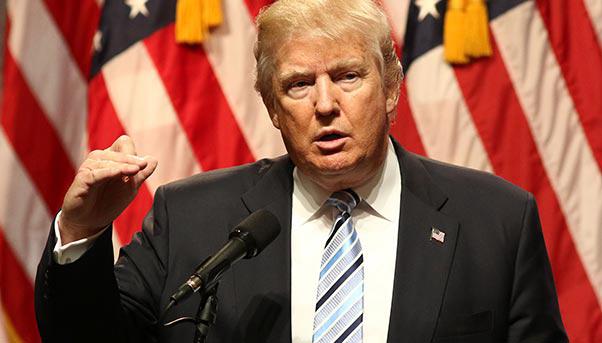
«Donald Trump will, without a doubt, be a positive for the American economy. His programme, from infrastructure investment to lower taxes, to internal liberalization, will be a miracle cure for America and, by extension, her allies.» Arthur Laffer, class of 1940, has the same dedication, engaging personality and infectious enthusiasm as always. Above all, he has talent: the same talent that impressed Donald Rumsfeld and Dick Cheney. They were two prominent officials in the Nixon administration in early 1974 when Laffer — a young economist with a PhD from Stanford who taught at the University of Southern California — drew his famous “curve” on the back of a napkin. It became known as the Laffer Curve. It showed that cautious and well-calibrated tax cuts, for companies in particular, led in the long term to higher revenue and, as specified Laffer, «most importantly, greater investment».
Rumsfeld and Cheney went on to impressive careers, ultimately rising, respectively, to Secretary of Defense and vice president under George Bush Jr. You eventually became Reagan’s chief economist. So the “curve” brought everyone good luck…
«For the simple reason that it was backed up by fact. I hope you remember that the period of Reaganomics, from 1981 to 1989, were years of great triumph for the American economy, of double-digit GDP growth, of inflation that was under control, of a strong dollar. The economic recipe had simply proved to be the right one. Now Trump is reviving it, and it will be just as successful. It will be a wonderful cure for the U.S. economy.»
Are you in touch with Trump? Will you officially join his staff?
«I’ve had long and comprehensive discussions with the new president, before, during and after he took office, and with the members of his economic team, all of whom I know very well. Together, we updated the “curve” and the entire package of economic measures that reproduce in large part, the measures that were proven to be winning back then. (Obviously adapting them to the current day. U.S. inflation, for example, is practically nonexistent today — while back then it was 15%.) As for taking on an official role, I’d prefer not to. I am very content where I am, in Nashville, Tennessee, where I started my own think tank with many excellent young people that it would be a shame to leave. But I will always be there for Trump and his team if they call me.»

Are all the proposals of the new president’s platform practical? Some are highly controversial, like protectionism.
«Trump is right on a number of points. Trade agreements, both those in effect and those being negotiated, from NAFTA to TTIP, are generally badly written and need to be adjusted, which is obviously easier for the ones that haven’t yet been approved. Just as it’s true that various countries, starting with China and Japan, have protectionist attitudes and barriers to entry that are absolutely unacceptable. But it would be a serious mistake to respond with countervailing duties. Everyone loses in trade wars. Commercial disputes should be resolved through diplomacy, with efforts that are both bilateral and through institutions like the WTO.
Contrary to what’s being said, the Chinese and Japanese economies and consumers would have everything to gain from honest competition with American companies. Today, adapting the exhaust systems of U.S. cars for sale in Japan costs $50,000, and China has a wide range of anti-American policies in effect. The task of the most illuminated leaders will be to knock down all these barriers without imposing others. I have every reason to include Trump in this group. Here’s an example I gave: imagine that the U.S. develops a cure for colon tumors, and Japan develops one for Alzheimers. What do we do? Do we refuse to allow these cures into our respective countries, condemning terminal patients to death? All from a misguided ‘anti-free trade’ sentiment, which is something that should be avoided at all cost».
Another major point is infrastructure. Trump is talking about launching a massive programme, of $500 billion or even $1 trillion. Do you think that’s possible?
«Not only possible but absolutely necessary. Infrastructure represents the focus and the center of the new president’s economic policy. In the sense that it’s possible to finance it, it will, slowly, but more than other reforms, lead America to grow by at least double the current rate. In the climate of a solid economy, of massive private investment — which is achievable with lower taxes — investment in major works projects will grow as well.
And it’s obvious to everyone that there’s a need for new roads, bridges, ports, damns, airports and railways. That said, I suggest not unleashing exaggerated forecasts. In any case, that referred to the next 10 years: one billion was mentioned but it could be a little less or a little more, depending on how the economy performs, and, especially, on a prompt case-by-case study of what’s really needed.»
You repeatedly cite economic performance, which depends mainly on lower taxes. Can you give us an idea of the scope of what you’re talking about?
«Look, that’s easy to do. Today, American companies pay as much as 44% in federal taxes, an exorbitant amount that is higher than the OECD average. I propose lowering them immediately, at least to the OECD average, and then quickly bringing them much lower. A flat rate would be ideal— that is, a rate that’s the same for everyone, of 19%. It’s an important reform but one that is only made possible by the favorable political balance in Congress now.
I recall that we had a similar situation in the Reagan era, and it culminated in the bipartisan law named after Democratic Senator Daniel Patrick Moynihan and Republican Bob Packwood, approved by the Senate with an unprecedented majority — 97 to 3. The law slashed the highest tax rate for individuals from 50% to 28% and for corporations from 46% to 34%. For individuals, instead of 14 different rates there would be two (15% and 28%). For corporations, just one, the flat tax I mentioned. Back then the results in terms of economic development were amazing: I don’t see why that can’t be repeated today.»


